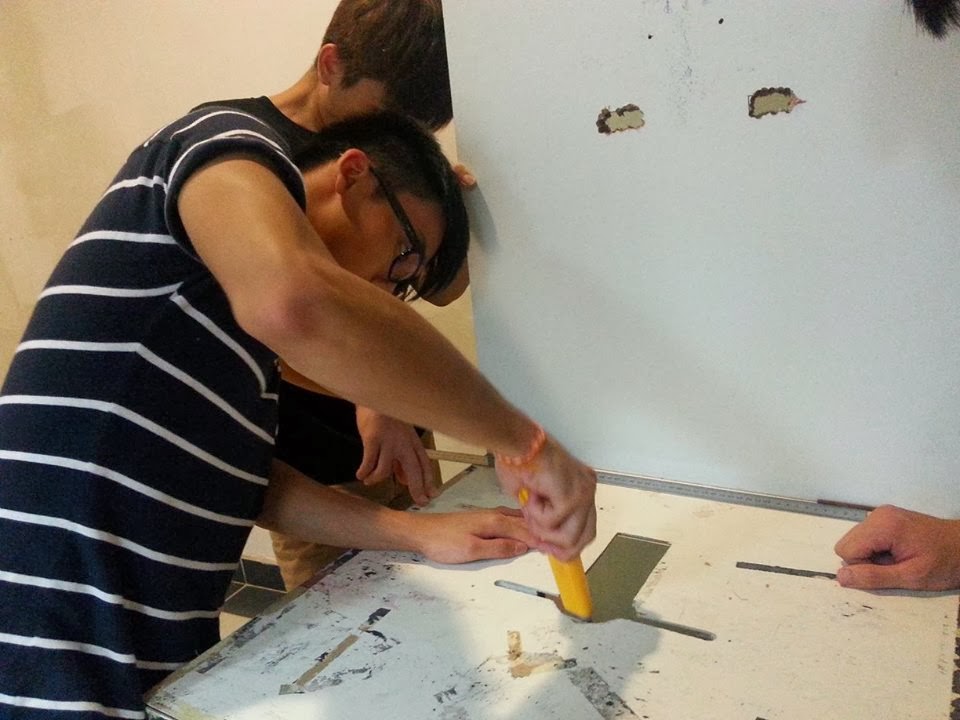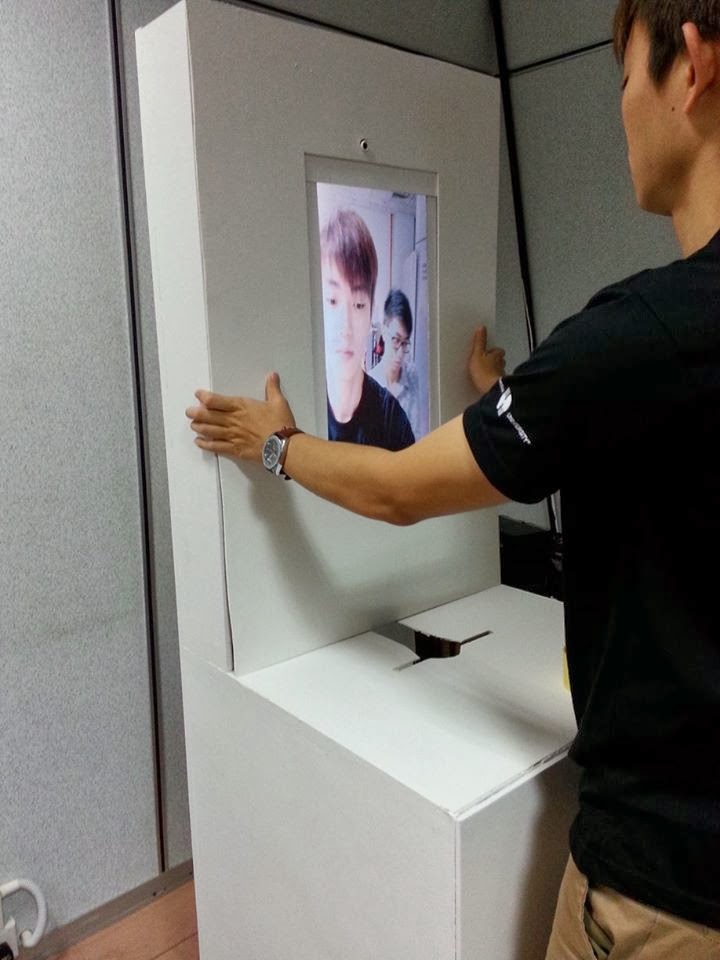Redza Piyadasa,
May 13th, 1969 (2006), Acrylic on plywood and mirror
Redza Piyadasa is
one of the contemporary Malaysia artist. Piyadasa
was born in 1939 in Kuantan, the capital of Pahang, in a family of Sinhalese origin. Initially he followed a study
at the Malaysia Teacher's College in Brinsford Lodgeto become a teacher. Pivadasa
dedicated his life to art, in the sense of focusing on art theory, as well as
performing himself. As an artist he produced visual
artwork, like paintings, installations andcollages. By means of his publications in Malaysian as well as in English, he importantly filled up an
vacuum of the sixties and seventies. He initiated a hardly existing debate in
this time in his country on art critic and history.
The image is
one of Piyadasa works, with titled “May 13th,1969”. The work is essentially an upright coffin with the
Malaysian flag printed upon it. As a Malaysian, we knew the
unforgettable tragedy of May 13. So Redza
Piyadasa using a coffin with printed Malaysia flag to represent the sadness of
Malaysia. The mirror on the below is use to reflect the coffin and the Malaysia
flag, it may means to make this tragedy as an advice, always remember.
So this is
the first reference of a very famous contemporary Malaysia artist. The artist
manipulated it with Malaysia current issue. So we believe that every artwork
must have a story behind. It is just a installation sculpture, non-interactive.
Daniel
Rozin, Mirror 9, 2006 Projected onscreen, custom software, computer, video
camera
Daniel Rozin is a famous
international interactive artist. His masterpiece is the “Wooden Mirror”, when
we talk about mirror must look at Daniel Rozin’s work. Besides that, Daniel
Rozin not only do a lots of hardware mirror but also the software mirror. There
are a group of pieces is comprised rear projected screens or kiosks connected
to video cameras and computers. When a viewer stands in front of one of these
pieces, their image is reflected on the screen after it has been interpreted by
the computer. The displays change rapidly yielding a smooth transition tightly
linked to the movements of the viewer.
Among the
series of software, I chose one of them which are “Mirror No.9”. Mirror No. 9 Creates a mosaic interpretation of the viewers’ image.
Unlike most mosaics, especially ones used in software, Mirror No. 9 uses blocks
of various sizes to create the image. It selects large blocks where the detail
of the image is low, and smaller blocks are used where the image is rich in
details. By the artist, he said “surprisingly this is also an effective way to compress the
image for transmission.”
This
“mirror” is very interesting, it never show the real you. The “mirror”
transforming you images to blocks, like a lying mirror. The “mirror” is not
just reflect but giving a wrong image of you, the wrong information given.
Jude Buffum,
Gustavo Dudamel, Advertising, Ilustraion
Jude Buffum is a illustratetist,
not only pixel but also conceptual and infographic. Jude graduated from the Tyler School of Art in 2001 with a
BFA in Graphic Arts and Design, where he went on to teach design and typography
courses for five years. After that he taught illustration at the University of
the Arts in Philadelphia for several years. While he was a part of the design
and illustration duo Headcase Design (2002–2007), Jude designed books for such
pop-culture phenomena as the Broadway show “Wicked” and HBO’s “The Sopranos”,
as well as the best-selling book The Baby Owner’s Manual, which he also
illustrated. Other clients include the New York Times, SONY, UPS, Target,
Square/Enix, Brooks Running, Courtney Love, the US Postal Service, Disney,
Publix, and Toyota/SCION. Jude’s design and illustration have received awards
from Graphis, Communication Arts, AIGA, Print Magazine, Society of
Illustrators, 3x3, and American Illustration, and his non-commercial work has
been exhibited internationally.
The Pixel art is always giving a feel of hiding, I
can never see it in details, the pixel art make my eye blur.
Reference links:




























